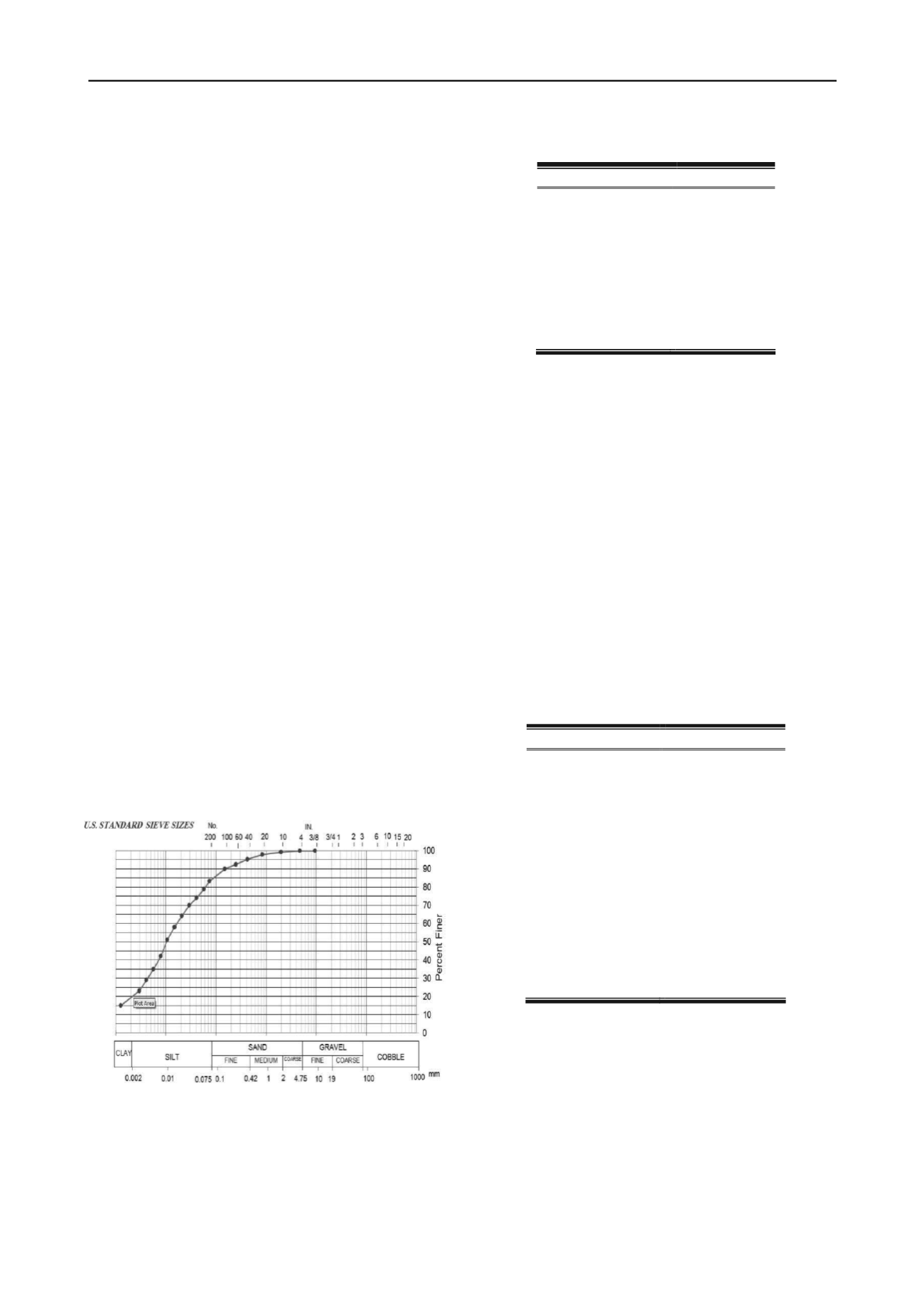
1322
Proceedings of the 18
th
International Conference on Soil Mechanics and Geotechnical Engineering, Paris 2013
material of industrial applications, it has become the most
valuable by-product among the pozzolanic materials due to its
very active, high pozzolanic property and very fine particles.
These particles are approximately 100 times smaller than the
average cement particle (Karimi et al, 2011).
In previous studies, there have been many researchers
investigating the effects of microsilica on the strength and
swelling characteristics of clayey soils were investigated. It was
seen that microsilica improved the properties of clayey soils
(Kalkan, 2009, Kalkan, 2011, Abd El-Aziz et al, 2004,
McKennon et al, 1994). Likewise, recently, the effects of
microsilica and lime have been investigated on CBR values of
sand (Karimi et al, 2011), (Kalkan, 2009, Yarbasi et al, 2007).
So their effects on cohesionless soils especially silts aren’t
investigated enough yet. Therefore our aim in this study is to
evaluate the feasibility of using stabilized silt with microsilica
and lime for a railway subgrade and then evaluate the effect of
wetting - drying cycles on the soil resistant.
2 MATERIALS
2.1
Soil
The silt used in this research was obtained from an area in Karaj
railway project in Iran. Atterberg limits tests were carried out
according to ASTM D 4318. The soil Plasticity Index (PI) was
obtained 2. The soil was classified as a low plasticity soil
according to the unified soil classification system ASTM D 422
- 87. The soil name is ML according to USCS (silty soil with
low plasticity). The soil classification is shown in Figure 1.
2.2
Lime
Quick lime which was used in this experiment was obtained
from the industrial group Qom-Iran limestone and its chemical
composition is shown in Table 1.
2.3
Microsilica
Microsilica has been obtained from Ferroalloy Industrial Co
(I.F.I) in Azna. The composition of microsilica mineral is
shown in Table 2.
Figure 1. Grain size distribution curve of the silty soil
able 1. Chemical properties of lime
Chimical names
Percentage
T
K
2
O
SO
3
MgO
4
0.8
2.65
CaO
51.64
Fe
2
O
3
0.13
Al2O
3
0.24
SiO
2
1.36
3 EXPERIMENTAL PROGRAM
3.1
Tests procedure
e- microsilica on CBR values of
Ta 2. Chemical properties of microsilica
Chimical names
Percentage
To evaluate the effects of lim
stabilized silty soils, first the optimum moisture of soil was
calculated from compaction test. Then the soil was mixed with
various contents of lime and microsilica at the soil optimum
moisture. Then the oven- dried soil was sieved from sieve #4
and lime and microsilica were added into them in 1, 3 and 5%
for lime and 2, 5, 8 and 12 percent of dried soil weight for
microsilica. Required amount of water was added to the mixture
to obtain soil optimum moisture, beyond. Time and attention
were paid to provide homogenous soil additive mixture
samples. The CBR tests were carried out on samples which
were cured for 28 days after 96 hours immersing according to
ASTM D 1883 - 99. And at the end, several wetting- drying
cycles were conducted to the optimum mixture of samples
which was economic and had proper CBR values to evaluate the
effect of the cycles on them.
ble
MgO
0.5~2
3
2
O
3
8
re
0.4
CaO
0.5~1.5
Fe
2
O
0.3~1.3
Al
2
O
3
0.6~1.2
SiO
2
90~95
C
0.2~0.4
Na
0.3~0.5
SiO
2
0.04~0.0
MO
0.02~0.07
P
2
O
5
0.04
Moistu
PH
0.01~
6.6~8.8
3.2
Compaction tests
um water content and the soil
To determine the soil optim
maximum dry unit weight, the modified compaction tests were
carried out according to ASTM D 1557 – 91. For this purpose,
the oven- dried soil passing sieve #4 was compacted in five
layers by 56 blows with 4.5 Kg hammer from 45 cm height in
6- inch mold according to procedure C from respective standard
test method.


